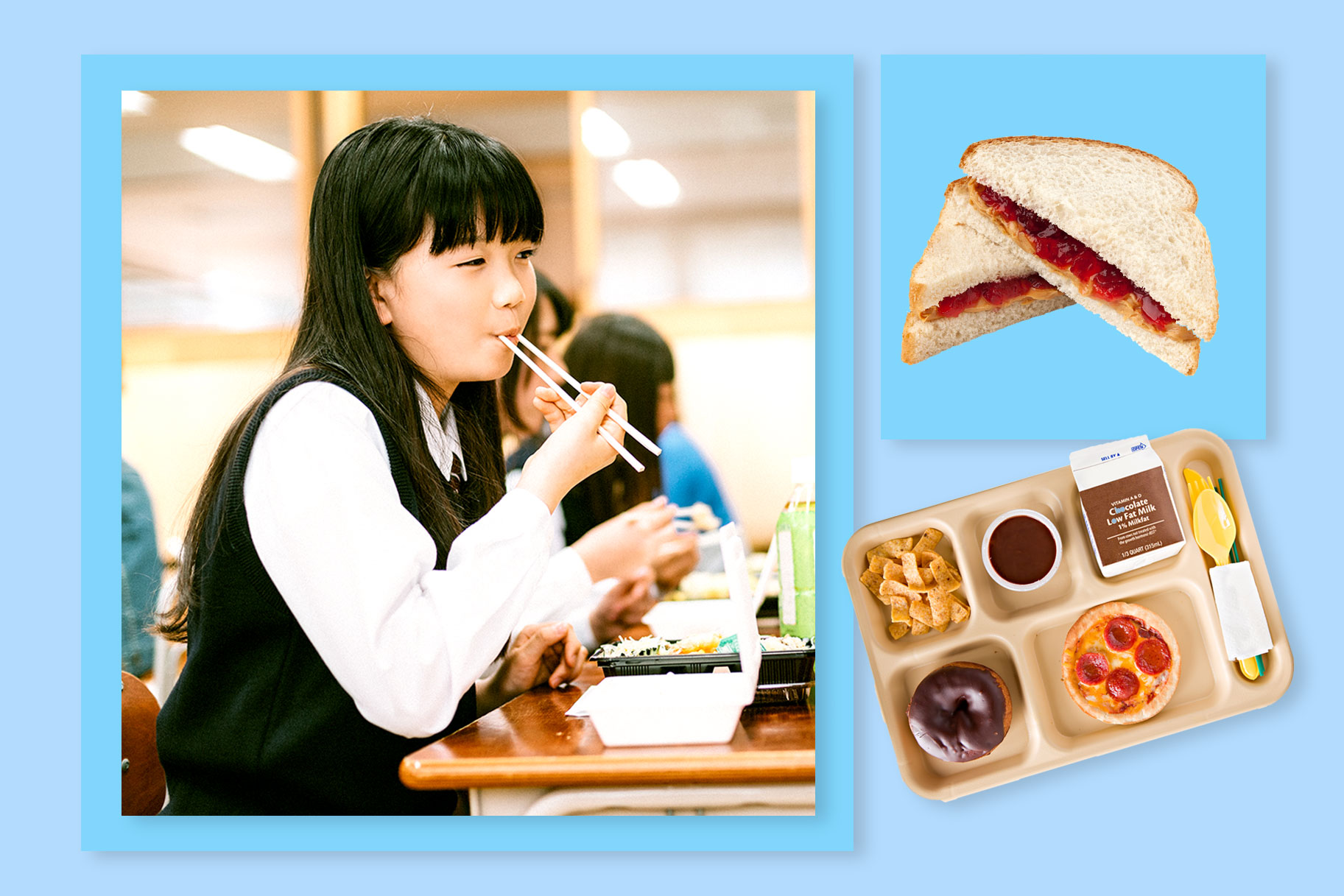
Create a free profile to get unlimited access to exclusive videos, sweepstakes, and more!
Here's What Kids Eat for School Lunch Around the World
Some of these look surprisingly delicious.

For many children in the U.S, meals served at school account for most of what they'll eat on a weekday. More than 30 million children participate in the National School Lunch Program, and more than 12 million in the School Breakfast Program so that's why good nutrition at school is so important. But how do American school meals compare to the rest of the world? We took a trip around the school cafeterias of the world to find out.
The U.K
Celebrity chef and restaurateur Jamie Oliver famously took on British children's bad lunch (or, "dinner") habits in his 2005 documentary series Jamie's School Dinners and through his "Feed Me Better" campaign. As a result of his efforts, junk food has been drastically reduced on school menus and kids' health, attendance records and academic performances have all improved. An image from Unpacking School Lunch shows a typical roast beef, gravy, potatoes and greens dish.
Japan
After the Jamie Oliver-inspired school lunch overhaul in the U.K, nine-year-old Scottish schoolgirl Martha Payne created a blog called NeverSeconds in order to monitor meal standards in U.K schools. But her mission also led her to comparing school lunches around the world. In this post, a Japanese friend documents a typical meal of rice, simmered chicken and Konjak with miso, fried chicken and boiled locally grown mustard spinach. Which all sounds delicious.
Malawi
The intrepid Payne ventured as far as Malawi in her quest to assess school lunches around the world. And she declared this one "the most important school meal I have ever seen." Cooked by a Mary's Meals volunteer, the lunch is made up of nsima, a typical dish made from maize flour, and fish from Lake Malawi.
Kenya
According to the Daily Meal, lentils and beans are a typical source of protein in a Kenyan school lunch. Githeri is a stewed mixture of dried beans and maize is also commonly served in large bowls to school kids.
South Korea
My Korean School Lunch is a (sadly neglected) "visual archive of the school lunches eaten by a non-Korean English teacher in Daegu, South Korea." While it hasn't been updated in a few years, our mouths are still watering at images of meals such as this one: seokbakji (pickled radish, thickly sliced); baked potato wedges sprinkled with parsley and parmesan powder and half a tomato; stir-fried seafood udon; samgyetang; and rice with mixed grains. According to Unpacking School Lunch, "Lunch is served in a metal tray with multiple compartments and always includes rice and kimchi (pickled vegetables). There’s also a protein (chicken, fish, egg, tofu, but often it’s octopus or squid!), usually served stewed or boiled, plus more veggie sides such as eggplant, radish, bean sprouts or lotus root. Soup is also offered some days."
France
In an episode of Parts Unknown, Anthony Bourdain visited a school in Lyon, France where he found second graders eating food made and served "with love." The gourmet meal began with creamy vegetable soup served with crusty French bread and ended with a dessert of homemade fromage blanc with chocolate and orange segments. Bourdain couldn't help comparing the experience of being served tableside to his American school lunches, which he likened to being in a prison.
Brazil
Brazil’s National School Feeding Program feeds every student enrolled in the public school network — that's about 42 million students each day. But it gets even better: PRI's The World explains that, in 2009, the government passed a law requiring cities to spend at least 30 percent of their school meal budget on produce from family farmers. “The idea that we have now, is a way to buy directly from family farmers,” Danuta Chmielewska, an education official in Sao Paulo city who works on the city’s school feeding program, told PRI. "This has helped local family farmers, while also improving the quality of school meals."
India
The Daily Meal says that eating lunch at a school cafeteria is not common in India; rather students bring their own homemade lunch boxes, "mainly consisting of roti, a leafy vegetable, and curried lentils and rice." The Daily Meal notes that such "a balanced and relatively healthy meal" is offset by some school cafeterias that "serve tempting snacks such as batatavada (round deep-fried potato and crumbs) and medhu vada (donut-shaped fried grain and lentil mixture)."

























